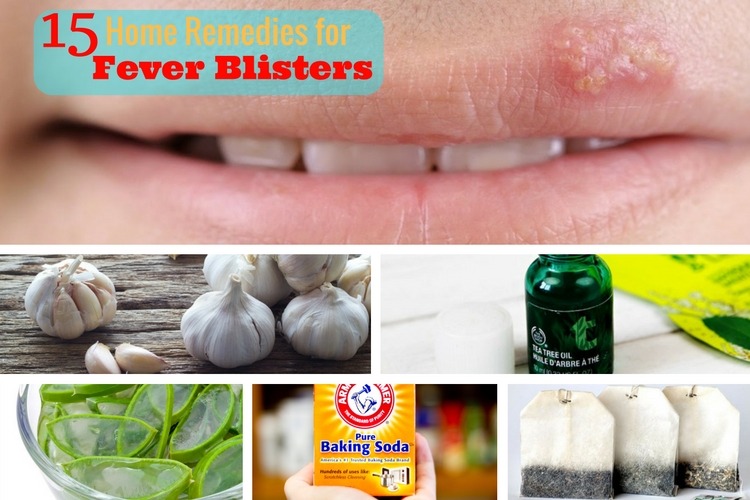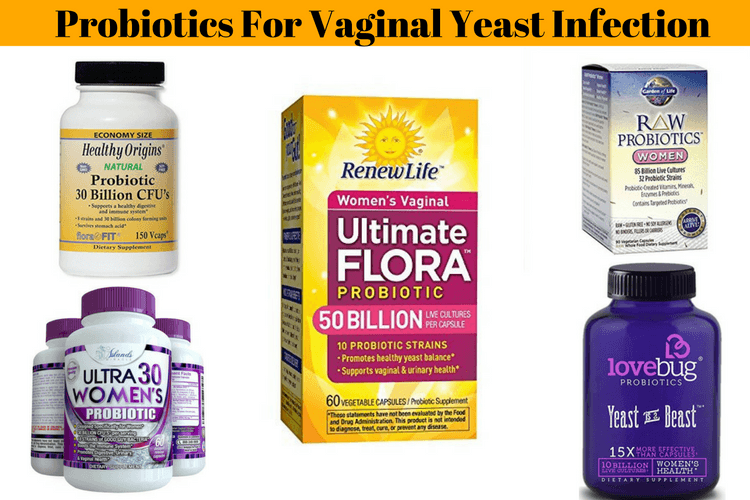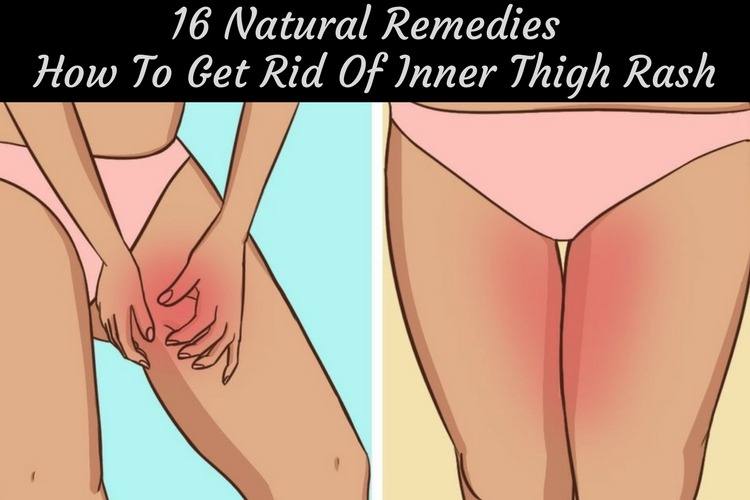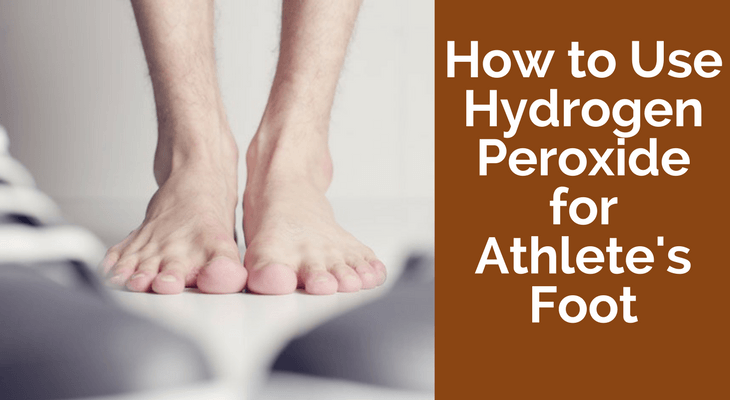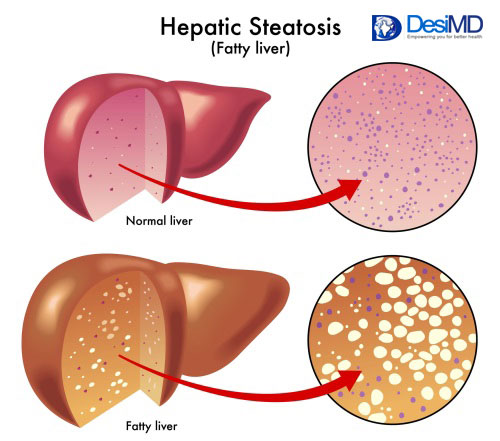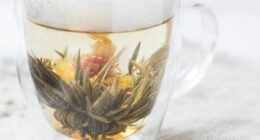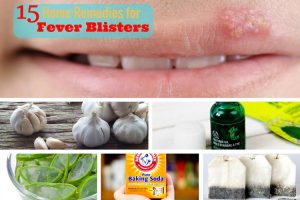 Do you experience a breakout of painful blisters around your lips and mouth during stressful situations, fever or when you spend time in the sun?
Do you experience a breakout of painful blisters around your lips and mouth during stressful situations, fever or when you spend time in the sun?
Then, you may be suffering from fever blisters or cold sores that are caused by the herpes simplex virus type 1.
This virus remains dormant in the body and is reactivated by triggers such as stress, sunburn or fever.
It is a high infectious and contagious disease that can spread through physical contact with a person who has a fever blister.
Fever blisters can be painful and accompanied by burning sensation, swelling and inflammation.
The positive side is that it not a serious disease and an outbreak heal on its own within 2 to 3 weeks.
Various types of medications – painkillers antibiotics and antiviral drugs are available to treat fever blisters but most of them cause serious side effects in the long run.
Benign cases of fever blisters are best treated with natural home remedies that provide relief from the pain, inflammation and discomfort and speed up the healing process.
Home Remedies for Fever Blisters:
1. Vanilla Extract
The alcohol base of pure vanilla extract creates an unfavorable environment for the virus where they cannot thrive, which in turn reduces the severity and duration of the outbreak. The anti-inflammatory activity of vanilla extract helps to reduce the pain and tingling and fights infection. It is best to use organic vanilla extract for this purpose.
Usage:
- Immerse a cotton swab in pure vanilla extract.
- Apply it directly to the cold sore and let it soak into the blister.
- Reapply it 3 to 4 times a day for a couple of days.
2. Tea Tree oil
Tea tree oil heals cold sores by drying them out form the roots. It reduces the size of the sore by 50% after first application. The powerful antiseptic, antifungal and antiviral properties of tea tree oil fights infection and kills the herpes simplex virus responsible for the condition. Its anti-inflammatory properties reduce the redness, swelling and pain associated with the fever blisters.
Usage:
- Combine one part tea tree oil with three parts of water.
- Dip a cotton ball into the diluted tea tree oil and dab it onto the affected area 3 times a day.
3. Licorice
Glycyrhizic acid found in licorice root possesses powerful antiviral and anti-inflammatory properties that block the virus cells in their track and counteract the symptoms of fever blisters. It also minimizes the redness and swelling of the blisters and promotes the healing process.
Usage:
- Mix 1 tablespoon of licorice root powder with some water to form a thick paste.
- Apply it directly to the blisters using a cotton swab.
- Leave it on to air dry.
- Reapply this remedy 3 to 4 times a day till the blisters go away.
- You can also drink a few cups of licorice tea.
4. Hydrogen Peroxide
Hydrogen peroxide disinfects the area, kills the bacteria and speeds up the healing process, thus making it difficult for the infection to spread or worsen. The herpes simplex virus thrives in warm and moist environment. Hydrogen peroxide helps to keep the blisters dry and moisture free.
Usage:
- Immerse a cotton ball in 3% hydrogen peroxide solution.
- Dab it all over the blisters.
- Leave it on for 5 minutes and then rinse the area with a clean wet cloth and dry with a towel.
- Reapply hydrogen peroxide 3 to 4 times a day for a couple of days.
5. Whole Milk
Applying a soothing milk compress is the simplest remedy for fever blisters. Whole milk contains a protein known as immunoglobulins that act as anti-bodies that prevent and fight off the herpes virus. It also contains l-lysine that inhibits the work of arginine, an amino acid that triggers outbreaks.
Usage:
- Dip a cotton ball in cold whole milk and dab it onto the affected area.
- Press the cotton ball on the blisters for 10 minutes.
- Repeat this procedure several times a day for 2 to 3 days.
6. Peppermint Oil
Peppermint oil has the capacity to directly kill the virus particles that escape from your cells and float around an erupted fever blister. Peppermint oil is effective only for topical treatment, it won’t show effect if it is ingested. Menthol present in peppermint oil provides a soothing and cooling sensation to the blisters and numbs the sensation of pain and burning.
Usage:
- Clean the surface of the fever blister with some water and dry with a towel.
- Dip a cotton swab in water and then dip in into the peppermint oil.
- Apply it to the blisters directly.
- Reapply this remedy 2 times a day for a few days.
7. Echinacea
In many cases, fever blisters are caused due to a weakened immune system. Echinacea tea boosts the defense mechanism of your immune system so that your body can fight off the infection more efficiently and speeds up the recovery process.
Usage:
- Boil a cup of water.
- Dip an Echinacea tea bag into it.
- Cover the cup and let the tea steep for 10 minutes.
- Squeeze the liquid out of the tea bag using a spoon and drink up the tea.
- You can drink 2 to 3 cups of Echinacea tea per day for a couple of days.
8. Witch Hazel
Extracts from the leaves and bark of witch hazel is used to treat various types of skin diseases. The natural astringent properties of witch hazel reduce inflammation and shrink the blisters. Tannins in witch hazel reduce inflammation, swelling and redness of the blisters and speeds up the healing process.
Usage:
- Soak a cotton ball in liquid witch hazel.
- Dab it directly on the cold sores and leave it on.
- Reapply this remedy 2 times daily for some days.
9. Aloe Vera
Aloe vera gel not only soothes skin irritation, but also heals infections caused by bacteria and viruses. The anti-inflammatory properties of aloe vera gel reduces redness, pain, burning and tingling of the fever blisters and shrink them significantly right after the first application. You can use pure aloe vera gel or aloe-based gels sold in stores.
Usage:
- Cut an aloe vera leaf and extract the gel using a spoon.
- Apply the gel directly to your sores.
- Leave it on to air dry.
- Reapply it to the blisters as needed.
10. Cornstarch
Cornstarch paste forms a thick protective layer over the cold sores and relieves the itchy burning pain associated with the sore. It also neutralizes the pH of the sores and alkalizes the overly-acidic environment making it impossible for the virus to thrive. This helps to shorten the duration of the cold sores.
Usage:
- Mix 1 tablespoon of cornstarch with water to form a smooth paste.
- Dab it on the fever blisters before going to bed.
- Leave it on overnight and rinse off with water the next morning.
- Repeat this procedure a few nights till the blisters are gone.
11. Ice and Petroleum Jelly
Applying a cold compress is yet another effective remedy for cold blisters that alleviates the pain and discomfort instantly and helps to reduce swelling and redness associated with fever blisters. Applying a dollop of petroleum jelly right after the cold compress helps to keep out the bacteria that cause infection.
Usage:
- Wrap 1 or 2 ice cubes in a cheese cloth and hold it on the blisters as long as you can.
- Pat dry the area with a clean towel and then apply some petroleum jelly on the blisters.
12. Garlic
The active enzymes in raw garlic work as an antiviral agent that destroys the herpes simplex virus that causes fever blisters. The antibacterial properties of garlic disinfect the area and reduce the risk of infection, which in turn shortens the healing time. Raw garlic is extremely potent and may sting a bit.
Usage:
- Crush 2 to 3 garlic cloves to form a paste.
- Apply it directly to the fever blisters.
- Leave it on for 15 minutes and then wipe off with a wet cloth.
- Reapply this remedy 3 times a day for 2 days.
13. Baking Soda
Baking soda can alleviate the pain, burning and discomfort associated with cold sores. It dries out the blisters from within and reduces swelling and size of the blisters. Baking soda treatment makes the blisters heal faster.
Usage:
- Take a tablespoon of baking soda and add some water to it.
- Mix it thoroughly to prepare a thick paste.
- Apply the mixture generously over the fever blisters and leave it on for 10 minutes.
- Rinse off gently with water and dry with a towel.
- Reapply this remedy 2 times a day for a couple of days.
14. Salt
Not many of us know that regular table salt can work as a potent remedy for fever blisters thanks to its antiseptic properties that reduces the risk of infection. Salt soaks moisture from the sores and dries them out completely. It also reduces inflammation, swelling and redness of the blisters and decreases healing time. Both sea salt and table salt can b used to treat fever blisters.
Usage:
- Wet a cotton swab in hot water.
- Roll it over table salt or sea salt.
- Apply it on the fever blisters directly and leave it on.
15. Tea Bags
The tannins found in green tea, black tea and white tea have powerful antiviral properties that fight the herpes simplex virus and reduce the duration of cold sores. The antioxidants in tea also reduce inflammation and the discomfort associated with cold sores.
Usage:
- Bring a cup of water to boil.
- Dip a tea bag in the water and let is steep for 10 minutes.
- Take out the tea bag, squeeze out excess liquid and let it cool down completely.
- Press the wet tea bag on the directly to the fever blister and hold it for 5 minutes.
8 Ways to Prevent Fever Blisters:
Boost your immune system – Consume immunity boosting foods and suck on zinc lozenges to boost up the immune system and prevent fever blisters.
Avoid stress – Stress is one of the main triggers for fever blisters. So, take time to reduce your anxiety and stress levels to prevent future outbreaks.
Don’t touch the blisters – A cold sore takes at least 8 to 10 days to cure on its own. So, there is nothing much you can do other than waiting patiently. Squeezing and picking the sore will only slow down the healing process and spread the infection to other parts of the face.
Avoid close body contact – Avoid mouth-to-body contact such as kissing and also refrain from hugging because the herpes simplex virus is highly contagious. Don’t share cups utensils and drinking straws with other people. Wash dishes and utensils with disinfectant soap.
Apply sunscreen on your lips – Excessive sun exposure and sun burn also triggers cold sores. So, make it a point to apply sunscreen or lip balm with an SPF of 15 or higher on your lips and other vulnerable areas before going out in the sun.
Change your toothbrush – Your toothbrush is a perfect carries of the herpes simplex virus that can trigger a new outbreak of fever blisters. So, discard your toothbrush once the fever blisters have cleared up.
Consume more lysine-rich foods – A particular protein called lysine found in dairy products combats the hepatitis virus that causes cold sores. Include more lysine-containing foods such as cheese, yogurt and milk in your daily diet.
Load up of vitamin C-rich foods – Foods containing vitamin C such as red berries, kiwi, tomatoes, spinach, bell peppers and broccoli are really beneficial for healing cold sores. Vitamin C boosts white blood cell count that fights off the infection caused by the herpes simplex virus.
Most outbreaks of fever blisters get well on their own within a couple of weeks. But you need to see a doctor if you have recurrent fever blisters that don’t heal within 2 weeks, have a weakened immune system, or the breakout is accompanied with high fever and eye irritation.
